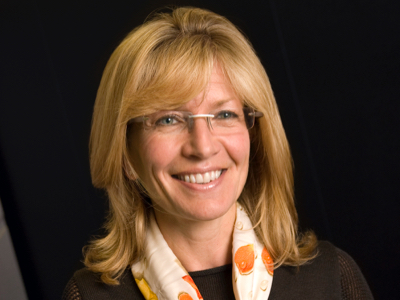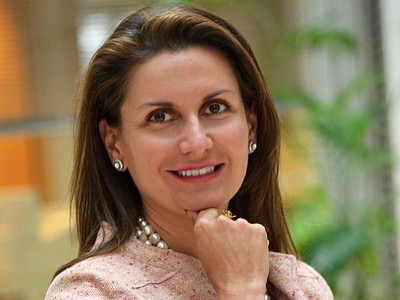By Aimee Hansen

Image via Shutterstock
If you scan Fortune’s 50 Most Powerful Women in 2016, you will be hard-pressed to find a Latina executive, amidst an overall drop in female CEOs to 4% in the Fortune 500 in 2016.
According to a 2016 report from the American Association of University Women (AAUW), Hispanic women make up 6% of the workforce but only 1.3% of senior-level executive roles in the private sector.
According to the Heidrick & Struggles Board Monitor, “the share of new board appointments for Hispanics (male/female) remained flat for the seventh consecutive year” across the Fortune 500. 4.7% of new directors on average are Hispanic each year, and only 4.0% in 2015.
What makes this even more striking is that new director appointments reached a seven-year high in 2015 (up by 60 appointments from 2014), and women appointments stagnated too. During a recent record (and opportunity) year for new appointments, diversity lost out.
The report indicates a resurgence of selecting new board members from “the usual suspects” (sitting and retired CEOs and CFOs took 73.2% of new seats). Only nine of the Fortune 500 CEOs were Hispanic in 2015, which doesn’t bode well for diversity if the “usual suspects” continue as the primary candidate pool for board appointments.
Meanwhile, a Mercer report predicts female representation at executive level in Latin America to out-pace North America by 2025, rising from 17% (2015) to 44% (2025).
A Perplexing Incongruence
The glaring elephant in the room is that the population, and consumer purchasing power, is rapidly changing, and Fortune 500 boardroom composition shows little proof of catching on.
The gap in representation of Hispanics in corporate leadership has the potential to create a dangerous gap in diversity of thought and insight, driving a deeper wedge between business leadership and consumer composition. Hispanic purchasing power was projected to have increased in the U.S. by 50% from 2010 ($1.0 trillion) to 2015 ($1.5 trillion).
Not only are Hispanics the largest ethnic minority in the country, but according to the government report “Fulfilling America’s Future: Latinas in the U.S., 2015”, 1 in 5 women and 1 in 4 female students are Latina.
Entrepreneurial Power
Scan the entrepreneurial landscape, and you’ll find a different picture: women are the new face of entrepreneurship, and Latinas are playing a strong role in leading that change.
According to the 2016 State of Women-Owned Businesses Report, there are an estimated 11.3 million women-owned businesses in the U.S., a number which has grown five times faster (45% increase) than the national average (9% increase) over the past nine years.
Nearly 8 out of 10 new women-owned businesses launched since 2007 (2.8 of 3.5 million) have been started by women of color, with the greatest growth among Latinas.
According to the report: “As of 2016, there are just under 1.9 million Latina-owned firms, employing 550,400 workers and generating $97 billion in revenues. Between 2007 and 2016, the number of Latina-owned firms increased by 137% – the highest increase seen among minority women-owned firms.” Trending back 18 years, the 2015 report showed that the number of Latina owned businesses has increased by 224%.
Make no mistake. Latina women are carving their own paths to business leadership.
Playing Down ‘Being Latina’
As the AAUW report authors state, “There is no monolithic ‘women’s experience’ of leadership. Women always have a race and an ethnicity, so a discussion about gender without reference to race and ethnicity (or vice versa) is simplistic and can be misleading.”
A recent Latina@Work study of over 1,000 Latina professional women released by People en Español, sought to understand the experience of Latina women in today’s corporate workplace.
The report found that, “As trailblazers among their families, they are simultaneously breaking cultural barriers and managing cultural expectations, which results in a feeling of ‘otherness’ both at work and at home.”
In the study, 80% of women agreed that “At work, I want to be seen as who I really am, including being Latina.” But many of the women struggled with managing how they are perceived at work, including not being seen as “too Latina.”
Women played down their accent and played up their university degrees. They also moderated appearance more than average. 31% reported having to dress more conservatively than co-workers to be taken seriously (versus 21% of non-hispanic Caucasian women), and 35% reported feeling the way they styled their hair impacted their success at work (versus 25%).
Hispanic women were also twice as likely to agree they have to work twice as hard because of their cultural background.
Intersectionality of Barriers
Latinas and Black women are the most underrepresented at senior leadership levels.
The AAUW report highlighted the intersectionality of barriers and bias: “Not only do women of color confront race and ethnic discrimination that white women do not face, they also experience gender bias differently than white women do—and they experience racial bias differently than do the men in their racial or ethnic group.”
Latinas have a unique set of preconceived biases around leadership perception. For example, “among college and university faculty, Latinas who behave assertively risk being seen as ‘angry’ or ‘emotional,’ even when they reported that they were not angry—they just weren’t deferential.”
According to the report, 60 percent of faculty Latinas reported a backlash against expressing anger, and they tended to shoulder most of the office housework.
As feminist and media-challenger Kat Lazo reflected to The Huffington Post, prominent and narrow media stereotypes have the ability to damage both perception and self-perception, and reinforce barriers to leadership: “What we see in the media right now is a limited version of our humanity.” Lazo stated, “So we internalize these messages and we put limits to who we can be in terms of our professions, in terms of our own identity.”
But nothing is one-dimensional. Lazo highlights that even “Latinx” (a gender neutral alternative) have to check their own privilege.
Amplifying Leadership Presence
In a Latinas Think Big article about developing and amplifying leadership presence, Sandra Tibbs, founder and CEO of Neverest Solutions, writes about cultivating and amplifying leadership presence:
Find your authentic leadership voice – Navigate through the stereotypes, cultural scripts, biases and arising inner conflicts to embrace your whole story and find your own voice.
Create a shared sphere of influence – Cultivate a sphere where listening and connection leads to stronger, and more influential, leadership.
Build resilience in yourself and others – Something every Latina leader will do as she challenges the status quo, and can help to nurture in others.
Tibbs writes about Latina leaders who own their presence: “They are irrefutable leaders who have a presence about them that is unique, authentic and strong. They know exactly who they are, and what impact they want to have. And, they don’t apologize for either. Their leadership presence enables them to overcome stereotypes, biases and even their inner obstacles so they can devote all of themselves to designing the lives they want.”
It is strongly evidenced that Latinas will keep on unapologetically rising to lead business, with or without that coveted access pass from the Fortune 500.
The choice for the corporate world when it comes to cultivating Latina participation in leadership would appear to be this: either catch on, or inevitably you’ll be playing catch up









